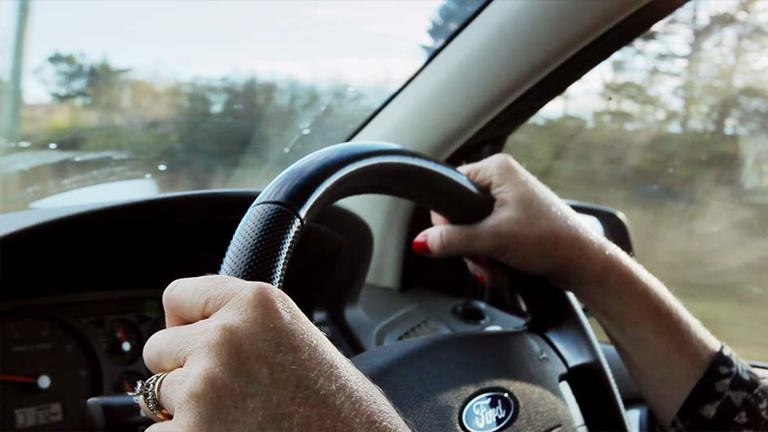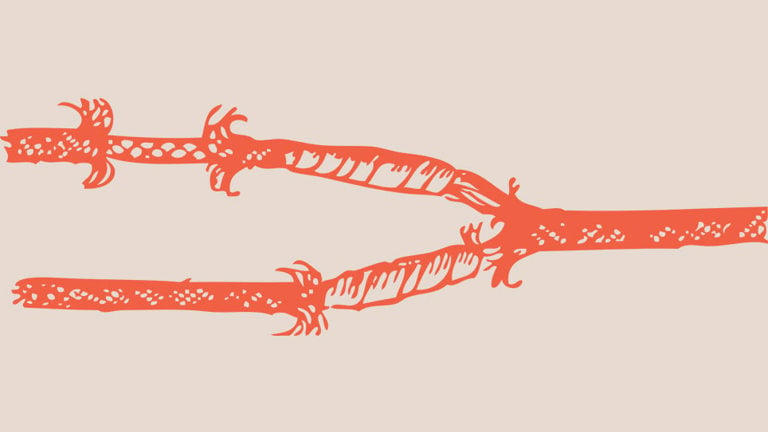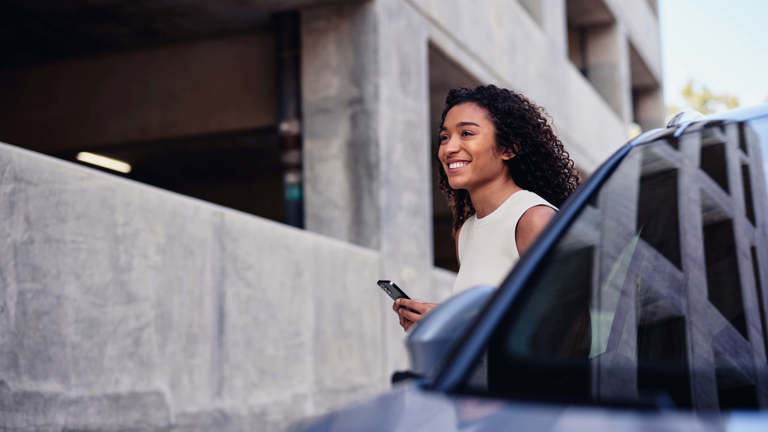It’s an unfortunate reality that even the most skilled and careful drivers can find themselves involved in a car accident. If it happens to you, it’s helpful to know what steps you might need to take – especially if any of the parties involved are uninsured.
In this article, we’ll explore what happens when there’s been a car accident without insurance – whether that’s you or the other driver – and look at how car insurance generally works when an accident is not your fault.
Plus, we’ll outline some steps you can take to help minimise stress and confusion in the aftermath of a car crash, and provide information on how to make a claim.
What happens if you’re involved in a car accident without insurance?
The answer to this might depend on two things: who is at fault, and what type of insurance, if any, the parties involved have. As the question of fault will likely help determine who will be liable for damages after a car accident, we’ll address this first.
Determining fault after a car accident
Working out who’s at fault after a car crash is not always straightforward. In some cases, if the other driver hits your car, they may be at fault. But this isn’t always the case.
In some instances, the fault might be split, evenly or proportionally, between both involved parties. For this reason, car accident fault determination will typically be the responsibility of your insurance company and/or legal representative.1 However, as an example, here are some factors that may contribute to a driver being considered at fault:2
- They were drink driving.
- They failed to keep a safe distance from the car travelling in front.
- They were speeding.
- They didn’t keep a proper lookout.
- They failed to obey a traffic light or sign.2
While emotions can understandably be shaken after a crash, Legal Aid NSW advises against admitting fault at the scene of an accident.2 In some cases, this may result in an insurer reducing or refusing your claim.3
Now let’s look at how insurance coverage may affect the liability of parties involved in a car accident in three scenarios, including a not-at-fault car accident.
Scenario #1: You have Comprehensive car insurance, and the other driver is uninsured
If you have Comprehensive car insurance with Youi, and an uninsured driver hits your car, we’ll cover the cost to replace or repair your vehicle.4 That’s because our Comprehensive policies automatically cover you for accidental damage as an insured event.4
When the accident is your fault
If you’re deemed to be the driver at fault in a car accident, you’ll likely have to pay an excess, but the cost of repairing or replacing your car and the uninsured driver’s vehicle will usually be covered. With a Youi Comprehensive car insurance policy, we’ll cover you for up to $20 million in legal liability if your car causes damage to someone else’s property in the accident.4
When an uninsured driver is at fault
Where the incident is completely the fault of a third party and you can provide the required details of the other driver, we’ll keep you moving by paying for a hire car until your car is repaired – or until we pay out your claim for a total loss.4 Additionally, as part of your Comprehensive cover, we’ll arrange for your car to be repaired, and pursue the uninsured driver on your behalf to recover the cost of your repairs.
Scenario #2: You have Third Party Fire & Theft or Third Party Property Only insurance, and the other driver is uninsured
In this scenario, depending on your insurer, if you’re deemed to be the at-fault driver, you’ll likely need to pay your policy excess, but your insurance may cover the cost of damage caused to the other car and the cost of repairing or replacing other damaged property. As with our Comprehensive cover, a Youi Third Party Fire & Theft or Third Party Property Only car insurance policy covers you for up to $20 million in damage to someone else’s property caused by your car.5
However, with Third Party Fire & Theft and Third Party Property Only cover, you typically won’t be able to claim for the damage to your own vehicle and property. Check your PDS for more details.
A not-at-fault car accident with Third Party Fire & Theft or Third Party Property Only insurance
If you’re not at fault in a car accident where the other driver is uninsured, they may be responsible for the cost of repairing or replacing any damage to your vehicle caused by the incident.
No insurance on their part typically means they may be personally liable for the cost of repairs and, in some cases, you may need to negotiate a settlement yourself with the other driver. This can be expensive, time-consuming and, ultimately, not always successful. If you do find yourself in this situation, you may want to consider seeking professional legal advice on the best way to proceed with your claim.
However, with a Youi Third Party Fire & Theft or Third Party Property Only car insurance policy, you’ll get up to $5,000 cover against uninsured drivers. So if someone without insurance accidentally damages your car, was completely at fault and you provide the required details, we’ll cover you for up to $5,000 after excess.5
Scenario #3: You’re uninsured, and the other driver is also uninsured
As neither driver in this final scenario will be able to make a claim, the cost of any repairs will likely need to be settled directly between the parties involved.
If you’re at fault, you may be responsible for paying for the reasonable of any damage. The other party may use a debt collector to recover these costs; and they have six years (three in the Northern Territory) in which to take the matter to court.6
Not at fault? The other driver will likely be responsible for the cost of repairing or replacing your car. You may have to negotiate a payment with the other driver, or pursue the matter in court.6
Regardless of who appears to be at fault, if you don’t have car insurance and an uninsured driver hits your vehicle, it could be a good idea to seek legal advice. However, it's possible the damage to your vehicle will be worth less than the cost of pursuing reimbursement, so it might help to keep this in mind before deciding on a course of action.
Do you have to pay the excess in a no-fault accident?
If your vehicle is insured with Youi, and the other driver is deemed completely at fault, we might be able to waive your excess if you can provide the other driver’s full name and phone number, and two of either their driver’s licence number, phone number, registration number or address.3 For the other driver to be deemed completely at fault, you’ll likely need to supply adequate proof that your actions did not contribute to the accident in any way. It’s generally considered best practice to write down information about the car crash while it’s still fresh in your mind, as it can help you to either make a claim or respond to a claim.7 We’ll outline how to do this in the next section.
What to do immediately after an accident
The moments straight after a car accident can sometimes be chaotic but, if possible, try to stay calm. Below are some of the steps you can take:
Make sure you and others around you are safe
Your first priority should be to evaluate the situation and attempt to ensure everyone is safe. Check yourself for injuries, and make sure that you’re not in any danger (this might mean you’ll need to leave your vehicle and walk to a safe place, away from any oncoming traffic). If you or anyone else needs medical attention, call 000.
Exchange details with all parties involved
If possible, try to obtain the following details from everyone involved:
- Contact information (including names, licence numbers, addresses and phone numbers)
- Vehicle registration numbers
- Insurance details of the other drivers.
Gather evidence of what happened
An accurate record of the accident might help you with any future claims. Some examples of actions you might want to take at the scene include:
- Taking well-lit photos of the accident scene (including street signs, traffic lights or intersections, the position of your car and the other driver's car, and any damage)7
- Writing down the time, date and location of the accident
- Making notes of any details you can remember about how the accident happened (this might include: road or weather conditions at the time of the accident, the speed limit on that road, and the speed you were travelling)7
- Saving any dash cam footage that may have recorded the incident7
- Getting witness accounts: if any witnesses are present, it’s helpful to get their details as well
- Obtaining a copy of the police incident report, if applicable.7
If police have been called to the scene, they’ll likely take the details of the people present and ask questions about what happened. It’s also possible that they’ll perform breathalyser tests, to see if any drivers are under the influence of alcohol.
Call your insurance company
If your car is damaged, and particularly if it’s undriveable, it could be a good idea to call your insurance company as soon as it’s safe to do so to start a claim. They should be able to advise you about towing and repair options.
It’s usually a good idea to start a claim as soon as you can after the accident. If you have any questions about how the process works at Youi, you can call us on 13 9684 to speak to one of our friendly advisors.
The confusion around Compulsory Third Party (CTP) insurance
CTP insurance is a registration requirement in all Australian states and territories. In New South Wales, this type of insurance is also called Green Slip insurance.
So, as long as the car that hits yours is registered, the owner should have CTP insurance to cover against compensation claims if they kill or injure someone in a road traffic accident.8 Still, as CTP doesn’t cover property damage, the vehicle owner won’t be covered for any damage their vehicle causes to property – such as your car – unless the other driver is covered by a Comprehensive, Third Party Fire & Theft or Third Party Property Only insurance policy.
How long after an accident can you file an insurance claim in Australia?
The amount of time you have to submit a car insurance claim after an accident can vary depending on individual state and territory laws, and on your insurance provider. It’s important to check your PDS to be sure.
Generally speaking, submitting your claim as soon as possible may result in your benefits being processed and paid out faster.
Want to find out more about our car insurance options? You can start a quote online.
The laws of each state and territory vary and there may be different rules and requirements for people involved in a motor vehicle accident. We recommend that you acquaint yourself with your obligations before travelling. If in doubt – call 000.
1 Source: NSW Police Force – Crash Reporting FAQs
2 Source: Legal Aid NSW – Who is responsible?
3 For more details, see the Car PDS
4 Available with Comprehensive policies. For more details, see the Car PDS
5 Available with Third Party Fire & Theft and Third Party Property Only policies. Limits and conditions apply. For more details, see the PDS
6 Source: Financial Rights Legal Centre – Car Accident when Uninsured, 2024
7 Source: Legal Aid NSW – Evidence
8 Source: Canstar – Different types of car insurance explained, 2023





